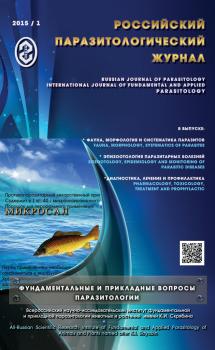Objective of research: to study a complex of measurements against nematodoses in the Republic of Belarus; to analyze the dynamics of nematodoses detected in 2010-2014 based onthe data of the clinical laboratory at the polyclinic of the city of Grodno; to investigate the familiarity of population with helminth infections by survey questionnaire of patientsfrom the a.m. polyclinic; to study the dynamics of trichinellosis morbidity according to the data of the regional Sanitary and Epidemiological Station (SES). Materials and methods: In our research, we used statisticaldatafrom the clinical laboratory of Polyclinic no. 4 of the city of Grodno and the survey questionnaire of patients; statistics from the regional Sanitary and Epidemiological Station on the trichinellosis morbidity among the population of the Grodno region in 2012-2014; coproovoscopic methods to diagnoseascaridosis and trichocephalosis; a method of rectal smears with an adhesive tapeto diagnose enterobiasis. Results and discussion: The nematode infection is spreadmainlythrough food. When evaluating the researchdata, we pointed out the decreased prevalence of ascaridosis, beginning from 2011; however, the number of studies carried out on this disease has increased significantly. The same situation is observed also in relation to enterobiasis; the figures have decreased twicestarting from 2013.The statistics show that pinworm infection (enterobiasis) most commonly occurs among children. Within 5 years, nocases of trichocephalosis were detected. In 2014 in Grodno region 36 cases of thrichinellosis were reported. The disease was causedby wild boar meat, which did not pass the veterinary expertise.
helminths, ascaridosis, enterobiasis, thrichinellosis, prevention.
В общем объеме гельминтозов Беларуси в 2012 году 83% приходится на энтеробиоз, 13,7% — на аскаридоз, 3,3% — на долю остальных 12 выявленных в отчетном году нозоформ: альвеококкозоз, дирофиляриоз, дифиллоботриоз, описторхоз, стронгилоидоз, тениаринхоз, трихинеллез, трихоцефалез, токсокароз, церкариоз, цистицеркоз, эхинококкоз [1].
По распространенности среди людей гельминтозы уступают лишь гриппу и острым респираторным заболеваниям. В 2003 году суммарный годовой показатель гельминтозами составил 775,5 на 100000 тыс. населения, удельный вес в структуре 32,5 % (без учета гриппа и острых респираторных заболеваниях). Это значит, что каждый третий заболевший поражен паразитами животного происхождения [2]. Наиболее распространенной на территории умеренного климата является популяция нематод (Nematoda). Почва является основным средством передачи паразитарного заболевания — аскаридоза и трихоцефалеза.
1. O sanitarno-epidemiologicheskoy obstanovke v Respublike Belarus’ Gosudarstvennyj doklad [On the sanitary and epidemiological situation in the Republic of Belarus. National report. Ministry of Health of the Republic of Belarus]. Minsk, 2013. 193 p. (In Russian)
2. Chistenko G.N. Helminthiases and their role in human pathology. Meditsinskie novosti. [Medical News], 1996, no. 2, pp. 20-25. (In Russian)
3. Vasil’kova Z.G. Osnovnye gel’mintozy cheloveka [Main helminthiases in human], M. Medgiz, 1948. 127 p. (In Russian)
4. Shalapenok, E.S. Prikladnaya parazitologiya: ucheb. Posobie [The Applied Parasitology. Textbook]. Minsk, Belarussian State Iniversity, 2009. 184p.(In Russian)
5. Rubina E.A. Sanitariya i gigiena pitaniya: uchebnik dlya stud. Uchrezhdeniy vyssh. prof. obrazovaniya [Sanitation and nutrition hygiene. Textbook for students of Institutions of Higher Professional Education]. M., Publ. House «Academia», 2011. 272p. (In Russian)
6. MU 3.2.3163-14 Epidemiologicheskiy nadzorza trihinellezom. [Epidemiological monitoring of trichinellosis. MethodicalRecommendations3.2.3163-14], 2014. (In Russian)
7. Sanitarnye normy i pravila «Sanitarno-epidemiologicheskie trebovaniya dlya torgovyh ob’ektov obshhestvennogo pitaniya». Postanovlenie Ministerstv zdravoohraneniya Respubliki Belarus’ ot 15.08.2012 № 128. [Sanitary Rules and Regulations«Sanitary and epidemiological requirements for public food service facilities». Decree of the Ministry of Health of the Republic of Belarus from 15.08.2012 no. 128]. (In Russian).
8. Uspenskiy A.V., Gorohov V.V. Parazitarnye zoonozy [Parasitic zoonoses]. Moscow, 2012. 335 p. (In Russian).
9. Uspenskiy A.V., Skvortsova F.K. Method of the veterinary and sanitary expertise of meat of commercial animals at parasitic zoonoses. Rossijskij parazitologicheskij zhurnal [Russian Journal of Parasitology], 2014, no. 3, pp. 151-156.





